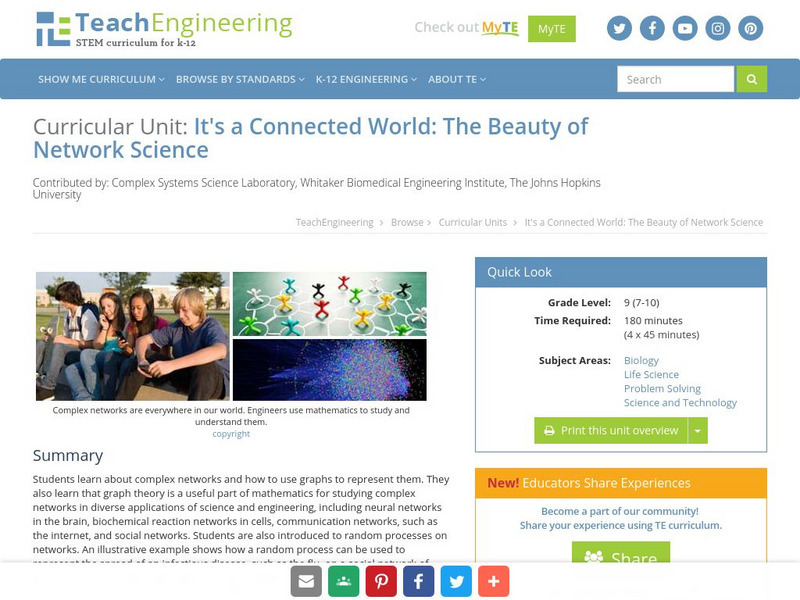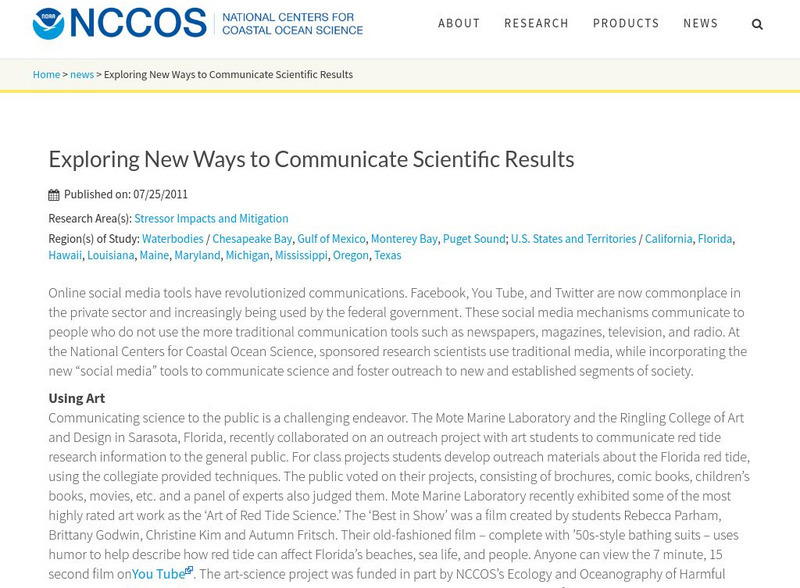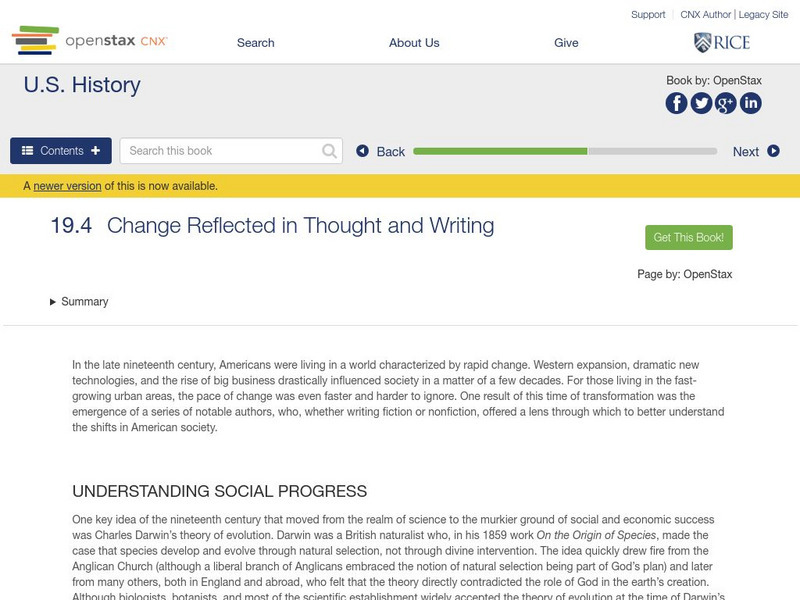Hi, what do you want to do?
Curated OER
What was Newton's Idea of Science?
Students form logical foundations for analysis of observations. They improve analytic reading abilities through practice. Students investigate the foundations of scientific thought processes and how to apply them.
Curated OER
Perception And The Interpretation of Experiences
Students describe a problem and propose alternative strategies for the solution. They use a model or drawing to visualize the solution to a problem. Students identify alternative factors to be considered when examining possible...
Curated OER
Fuel Cells
Students examine how fuel cells and combustion engines work. Using the internet, they research the positives and negatives of the various energy sources. In groups, they complete an experiment with a working fuel cell model and take a...
Curated OER
Solar Cars
Learners research the causes and effects of air pollution. Using the internet, they examine the specific effects of carbon dioxide on the environment and discover the benefits of using solar power. In groups, they build a model of a...
Curated OER
Acid Rain
Students identify the causes and effects of acid rain. Using the internet, they research pollution sources in their local area and by collecting rain samples and testing the pH. In groups, they develop their own plan urging local...
Curated OER
Cancer City USA
Students investigate a phenomenon known as the cancer cluster. Students determine potential cancer clusters given real data and support their findings using mathematical calculations. Students Create a graphical representation of the...
Curated OER
Ask An Expert
Students invite community members to visit the classroom and interview them about water in the community. Students prepare for, conduct, and follow up an interview and record their responses in their Water Journals.
Curated OER
Biology: Howler Monkeys Tell All
Students examine a PBS special about howler monkeys as an introduction to scientific forensic investigative methods. In groups, they conduct a host of experiments containing clues which point to discovery. By challenging assumptions,...
Curated OER
Bats Online!
Second graders read books and other resources to learn about bats. In this bats lesson plan, 2nd graders read books and research the internet about bats. Once students learn about bats, they will take an online bat quiz.
Curated OER
Solar
Students study solar energy. For this renewable energy lesson students complete several lab activities using different controls and variables.
Curated OER
Exploring Climate Change with GIS
Students investigate climatological changes that are occurring to the Earth. In this climate change lesson plan, students access an assigned web site to view maps and lessons that show how climate change makes a difference to life on Earth.
Curated OER
Breaking News English: Romantic Love Lasts Only a Year
In this English worksheet, students read "Romantic Love Lasts Only a Year," and then respond to 47 fill in the blank, 7 short answer, 20 matching, and 8 true or false questions about the selection.
Curated OER
Make It All Better!
Students design an innovation that could help their community. In this technology lesson, students identify problems that could be solved by innovation. They present their ideas in class.
Curated OER
Facts into Action
Students role play chosen scenario about smart decision making. In this drug awareness lesson, students discuss the danger associated with drug abuse. They practice how to make careful choices when faced with a difficult situation.
Science Buddies
Science Buddies: Career Profile: Geographer
Learn about the career of a geographer, a social scientist that uses knowledge of climate, culture, and topography to address a whole host of problems the world faces. Find out the educational requirements and what the job entails in...
US Department of Labor
Bureau of Labor Statistics: Conservation Scientists and Foresters
Comprehensive description of the career of forester is included with other conservation scientists.
US Department of Labor
Bureau of Labor Statistics: Environmental Scientists and Specialists
This resource provides occupational information about environmental scientists and specialists.
US Department of Labor
Bureau of Labor Statistics: Agricultural and Food Scientists
This resource provides information about careers focusing in agriculture and food sciences.
Cengage Learning
Investigating Social Change: Midwest
Explore the evolution of the Midwest region of the United States. Learners and teachers will gain a different perspective about the Midwest when they check out this site.
TeachEngineering
Teach Engineering: It's a Connected World: The Beauty of Network Science
Students learn about complex networks and how to use graphs to represent them. They also learn that graph theory is a useful part of mathematics for studying complex networks in diverse applications of science and engineering, including...
NOAA
Noaa: Nccos: Exploring New Ways to Communicate Scientific Results
Discusses the many types of media technology that scientists have available today to communicate the results of their research. These include social media tools, educational web pages, videos, virtual worlds, and podcasts. Many examples...
OpenStax
Open Stax: Urbanization 1870 1900: Change Reflected in Thought and Writing
American writers and intellectuals played an important role in articulating the changes taking place in Industrial America in the late 1800s and early 1900s. Learn about some of the prominent writers, scientists, and philosophers at that...
Alabama Learning Exchange
Alex: The Study of Human Geography
Geographers are social scientists who are interested in human activities as well as the physical environment. Human geography includes a wide range of topics, such as the study of languages, religions, customs, economics, and political...
TED Talks
Ted: Ted Ed: Population Pyramids: Powerful Predictors of the Future
Kim Preshoff explains how using a visual tool called a population pyramid helps policymakers and social scientists make sense of the statistics, using three different countries' pyramids as examples. [5:01]




























